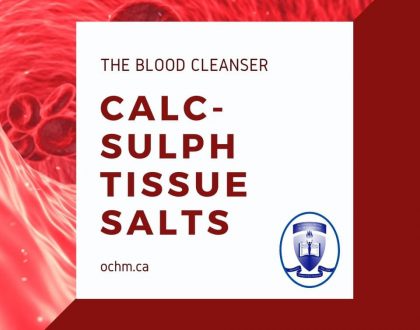Homeopathy for winter ills
Homeopathy for winter ills
January 26, 2016
|
Robert Medhurst
It’s great to live in an environment where the temperature variations are not particularly extreme. For most people though, the colder temperatures and weather patterns that occur during winter are associated with a constellation of health problems that can be debilitating, if not deadly. Herbs, supplements, acupuncture, diet and lifestyle changes can provide useful solutions, but for many, homeopathy delivers a rapid response to these problems and is convenient and easy to use.
Following are some of the more prominent ailments that are called to our attention in winter, and some homeopathic suggestions for their relief. Most of the remedies mentioned can be used in a 6C potency three times daily. For any issues that don’t resolve in a reasonable period of time, or those that increase in severity, the services of a qualified and experienced homeopath should be sought. Always consult with a Registered Homeopath who has undergone extensive training in both homeopathy and health sciences.
Bronchitis
Acon – Symptoms from exposure to cold and dry cold winds, better in open air, worse at night, in warm room or in cold air.
Bryonia alba – Dryness of mucous membranes with stitching pain better for cold, worse for warmth or motion.
Ferrum phos – Bronchitis in its early stages, worse at night and for motion.
Ipecacuanha – Bronchitis with rattling of mucous, better for open air and rest, worse for warmth and during winter.
Phosphorous – Painful bronchitis with loss of voice or hoarseness, worse in the evening, from inhaling cold air, or a change in the weather.
Sticta pulmonaria – Catarrhal bronchitis, worse for sudden changes of temperature.
Common Cold
Acon – Colds that occur suddenly from cold, dry weather or cold winds, better in open air, worse at night, in warm room or in cold air.
Allium cepa – Colds from cold, damp weather with acrid nasal discharge, better in open or cold air and worse in a warm room.
Arsenicum album – Colds with sneezing and burning of mucus membranes, better from heat and worse from cold or wet weather.
Euphrasia – Colds with much thin bland mucous, better for coffee, worse in warm air and in the evening.
Gelsemium – Acute colds with thin acrid discharge, better for open air, worse for damp weather or before a thunderstorm.
Kali bich – Chronic colds with thick, ropy, greenish-yellow discharges better for heat and worse in the morning.
Nat mur – Colds associated with much thin, watery discharge which begins with sneezing, better for open air, worse for heat.
Quillaya – For the first stages of a cold associated with a sore, dry throat.
Cough
Aconitum napellus – Coughs that occur after exposure to cold and dry cold winds, better in open air, worse at night, in a warm room or in cold air.
Belladonna – Dry ticklish cough worse at night and when lying down.
Drosera – Whooping cough and other spasmodic coughs that end in gagging or retching, worse for lying down.
Ipecacuanha – Incessant, violent, rattling cough that fails to produce sputum, worse from lying down.
Pulsatilla – Coughs that are dry at night, but loose in the morning, producing large volumes of sputum, are better from open air and cold, and worse for warmth.
Rumex crispus – Dry, ticklish cough which is worse in the evening and from inhaling cold air.
Sticta pulmonaria – Dry cough that is worse on inspiration, and worse for sudden changes of temperature.
Tags: Flu, Fever
bronchitis
cough
common cold
experienced homeopath
classical homeopathy training
registered homeopath
Recommended Posts

Exploring the Lesser-Known Aspects of Aethusa Cynapium: Its Relationship with the GI Tract and Animal Lovers
March 27, 2024

Calc-sulph Tissue Salts is considered “the Blood Cleanser”
April 20, 2021

Ferrum Metallicum is a great Homeopathic Remedy for Anemia
April 20, 2021

